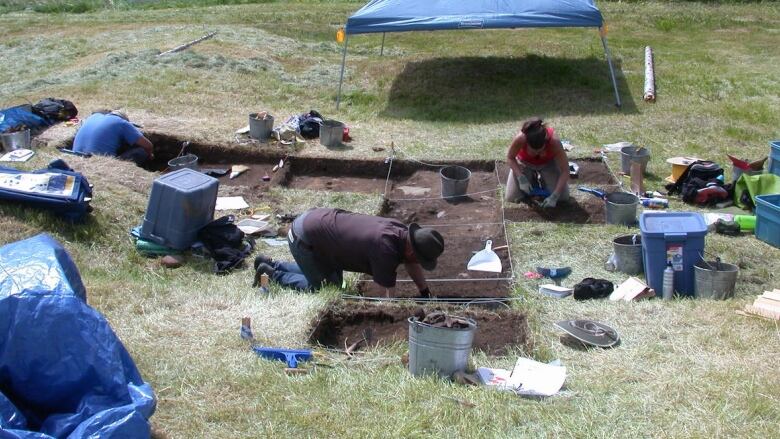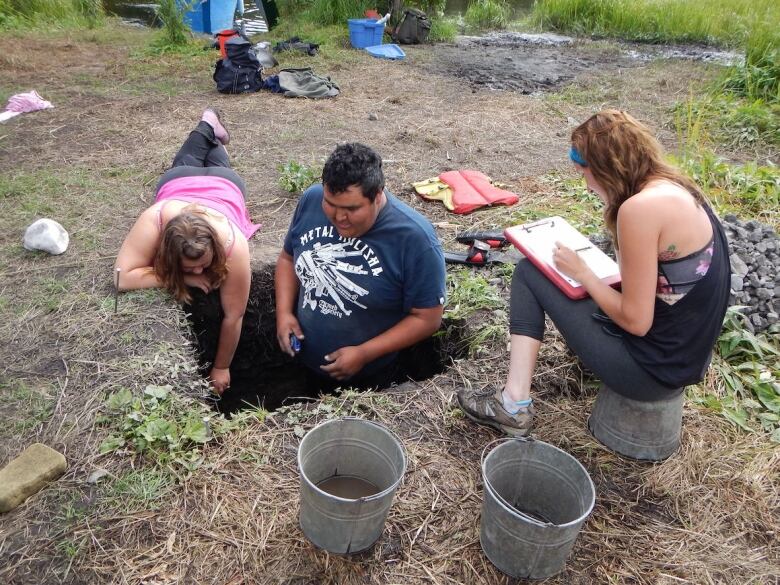Archeological findings confirm oral history of Lake Babine First Nation in northern B.C.
Sprawling village, complex fish weirs around lake date back at least 1,300 years

Archaeological findings out of northern B.C. have confirmed the oral history of the Lake Babine First Nation, dating back at least 1,300 years.
Some of the more significant findings include a largevillage andremnants of fishing weirs that were used for more than 1,000 years.
In 2010, the Lake Babine First Nation, located about 220 kilometreswest of Prince George,approached researchers at the University of NorthernBritish Columbia to help them with archeology in their region.
They wanted archeological evidence to confirm their people's oral history which was once passed down through generations, but hadbeen fragmentedduring colonization.
"It's an area that has never been explored archeologically ...that really is kind of a black hole," project director and archeologistFaridRahemtulla told Daybreak North, adding that most parts of B.C.have been studied more closely.
"This is really kind of all brand new and pretty exciting for the archeology and Indigenous communities in general."
Focused on studying villages and fishing weirs
Researchers focused on finding remains of villages and fishing weirs around Lake Babine, a 150-kilometre long lakenorth of Burns Lake.
"They told us that these villages were quite large," said Rahemtulla, and thatpeoplewould gatherfor a few months in the summer and fall to harvest salmonand preserve the fishfor the winter.

Oral history surroundingLake Babinesaysa number of villages existed on its shoresprior to European settlers moving into the areaand that salmon was the primary resource. The discovery of the millennium-old weirs supports that version of events.
"The Babine watershed actually is home to quite a large number of the Skeena sockeye that come in from Prince Rupert," Rahemtulla said.
"This allowed the Babine people to take quite a number of those fish through these complex wood fish weirs that they constructed."
Having examined the weirs closely, Rahemtulla said they were technologically advanced. Researchers are currently working to find out how they were builtand used.

One villagecalledNassGlee,nearFort Babineon the northern reach of the lake, is so large that archaeologists have yet to find itsboundaries. Because of its size, Rahemtulla said the only way it could havebeen sustained would have been by fish caught using the wooden weirs.
Researchers are planning to head back to the region in the summer tofocus on aman-made islandengineered 1,000 years ago using stone tools.
"As far as I know itmight be the only one in the world," Rahemtulla said.
With files from Daybreak North












_(720p).jpg)


 OFFICIAL HD MUSIC VIDEO.jpg)
.jpg)



























































































